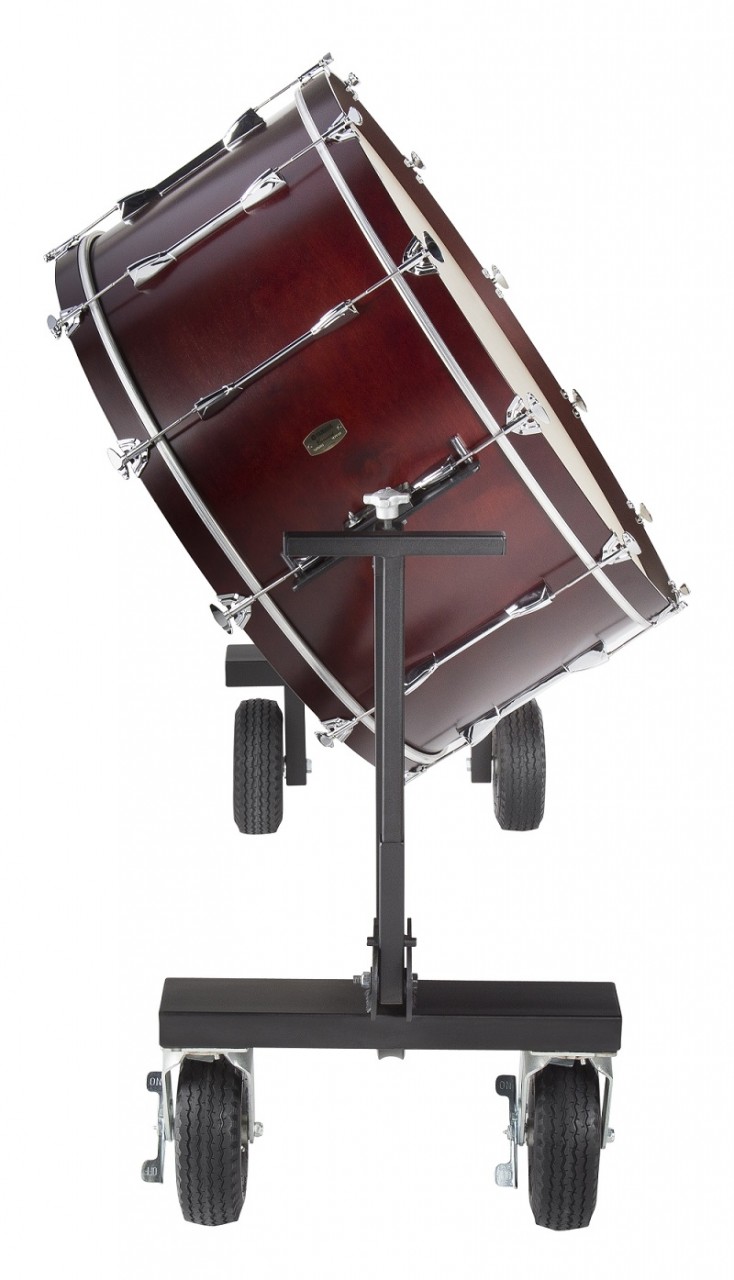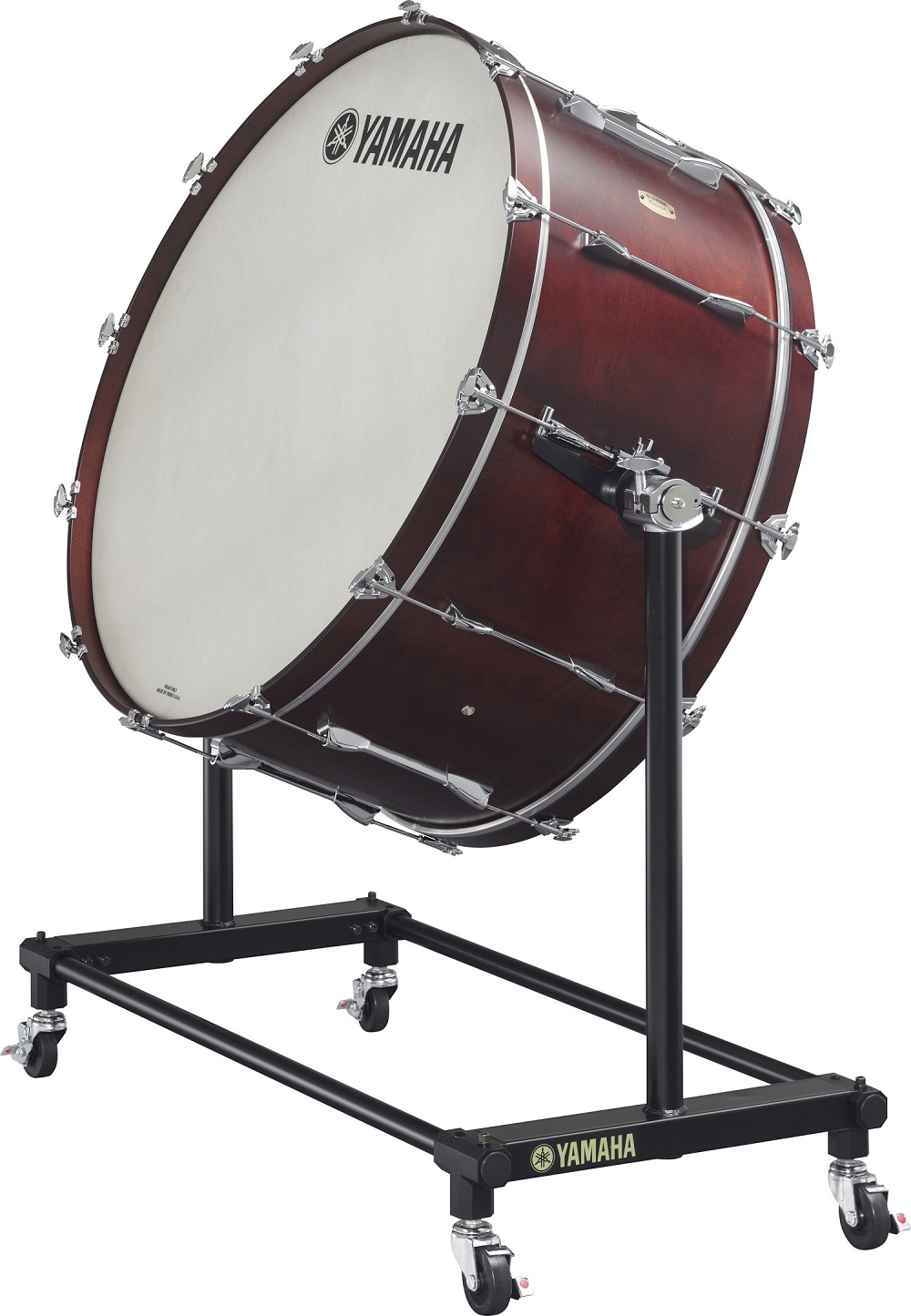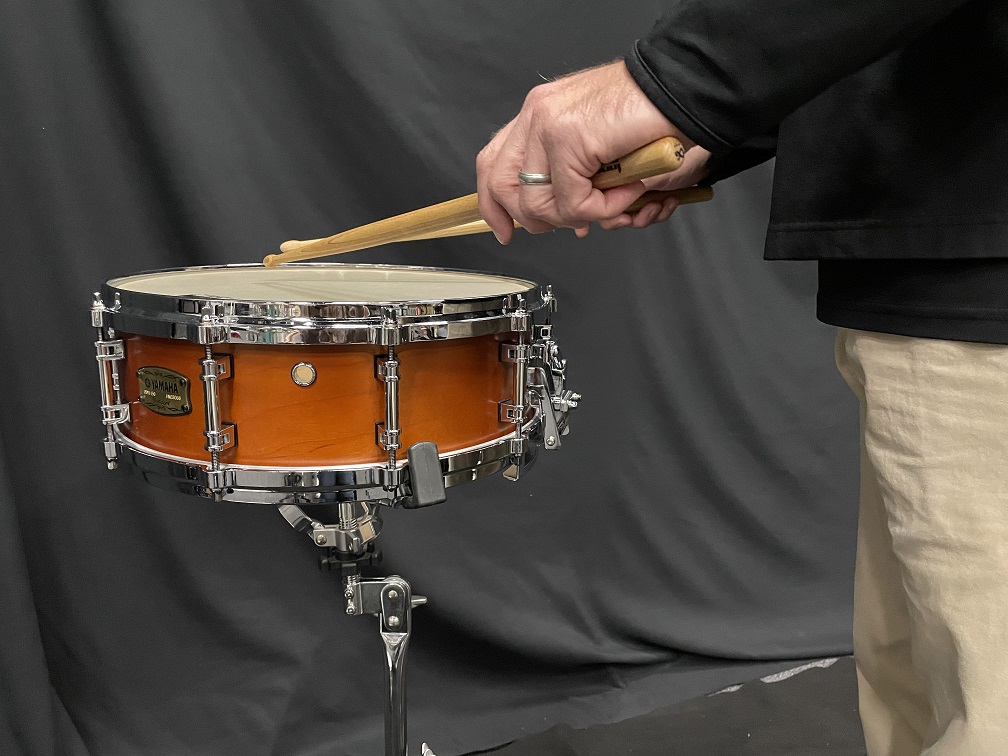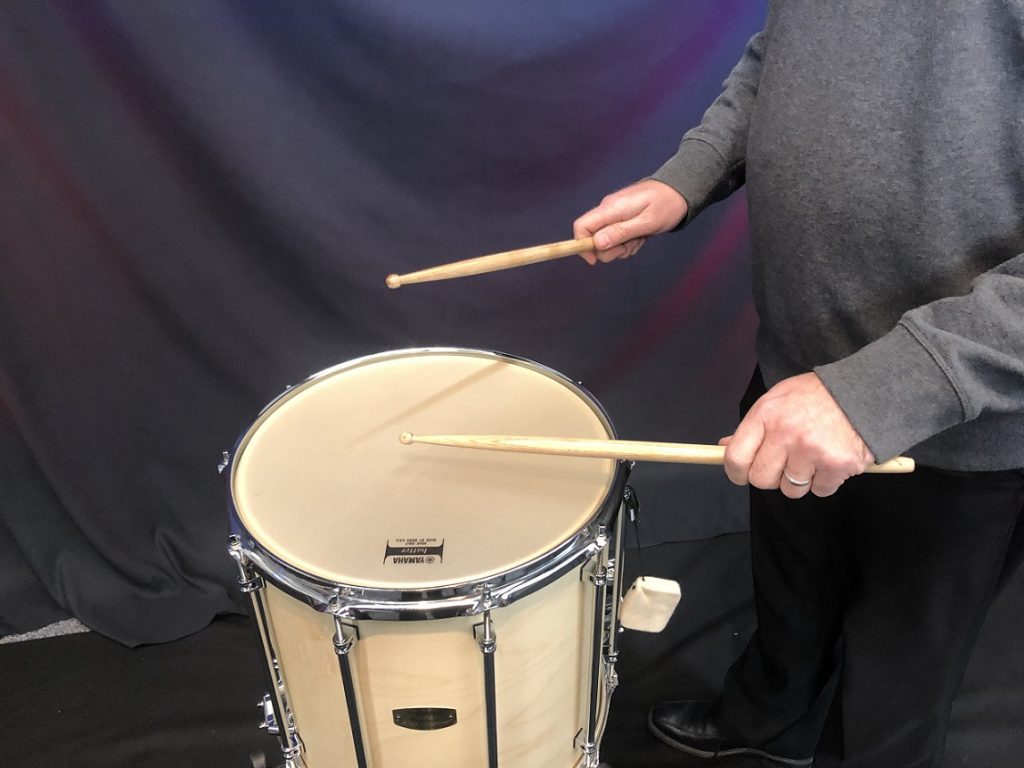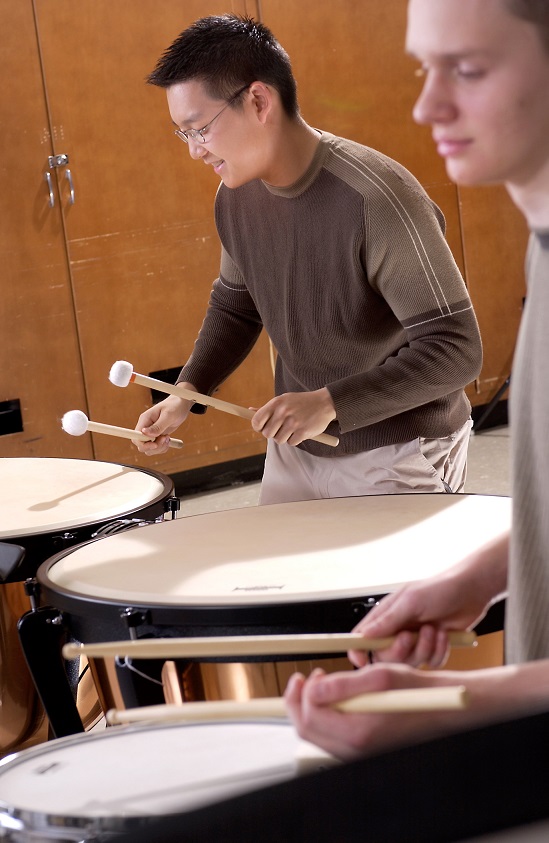Fix It: Bass Drum Teaching Tips
Try these expert tips on fixing common errors that bass drum students make.
I recently reached out to a small group of my University of Kentucky alumni, who teach band and orchestra in public schools.
I wanted advice from educators who are in the trenches every day, so I asked them: “What are common problems that beginner and intermediate student musicians encounter regarding the bass drum?”
It’s easy for directors to overlook the significance of having an experienced, competent student musician playing a bass drum part, especially in the middle school band setting. Often, directors assign the best “note readers” to mallet instruments, students with the best “chops” to snare, students with the best “ear” to timpani and then assign everyone else to accessory instruments.
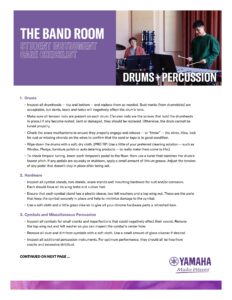
Download this Yamaha Drums and Percussion Care Checklist for Students now!
It turns out that one of the least-experienced percussionists will often be assigned to play the bass drum. And why not? After all, the density of the music is fairly low on the bass drum part. However, the reality is, if the pulse and/or impact moments on the bass drum part are not precise, the entire ensemble sound output can become unfocused.
Why is the bass drum player special? They are a soloist!
Fix It: Bass Drum Placement in the Ensemble
The percussion section is normally the farthest section from the conductor. The low instruments, such as timpani and bass drum, should be placed in the rear center of the band/orchestra, with the timpani placed closest to the low brass. I like to place the cymbals and gong closest to the bass drum to make unison attacks easier to execute and balance.
Think of the bass drum heads as searchlights — the sound projects best in the direction they are pointed. However, the direct sound of the bass drum heads when pointed at the audience can be too articulate and harsh. I recommend that the bass drum shell be vertical with the heads facing the “wings” (perpendicular to the front of the audience). This gives the bass drum a warmer tone and makes it easier to blend with the ensemble. Some composers have asked that the bass drum shell be positioned on a horizontal angle with the playing head facing the ceiling. This scenario should be used sparingly to create a special dramatic effect or where the bass drum is a solo part.
Fix It: Stay in Time
In the band/orchestra, sound travels from the back to the front. It’s difficult for student musicians to listen “forward” to synchronize with others because of the nature of sound traveling in the direction the instruments are pointed. If you listen to another musician playing in front of you, you are receiving their sound after they played it — the longer the distance between players, the wider the sound lag.
Tempo and pulse control can begin to fluctuate in large ensembles if the player listens to the wind players in front of them for precision. In these situations, it’s best to focus on the conductor’s movement and rely on his or her communication of the pulse. The bass drummer should focus his or her awareness of the movement of the bass drum beater and move to mimic the conductor’s actions. Your arms will keep you steady and your body motion will help you keep time.

Fix It: Where to Strike the Head for the Best Tone
Choose a specific playing area and use this as a reference point for achieving the desired sound. Aim for the correct playing area, not just the correct note. Achieving consistency in the playing area is the first step toward playing with consistent, quality tone.
Think of the bass drum head as a three-ring target. The outer ring is closest to the rim and should be used when performing a sustained roll. This playing area offers the most resonance. Players can experiment to find the best “sweet spot” that produces the proper, sustained tone.
The center “bulls-eye” is reserved for creating special effects. This playing area offers the darkest sound with the least resonance. Experiment with mallet choices to produce effects like “thunder,” “cannon shots” and other secco notated sounds.
The middle ring is reserved for most general playing. This playing area offers a balance of sustained and full tone. Moving the mallet toward the center yields a darker tone — move away from the center for a brighter tone.
THE YAMAHA EDUCATOR NEWSLETTER: Sign up to receive real-world advice, tips and instrument guides!
Fix It: Stop the Bass Drum from Ringing
Composers always notate when to start the sound of a percussion instrument, but rarely when to stop the sound. Choose to dampen the bass drum only when appropriate. Because percussion instruments have a natural decay, they should normally be allowed to sustain. Students should be flexible when interpreting note values and rests on percussion instruments. Rests are often used to make percussion rhythms clearer and easier to read and do not always indicate note length or when to dampen the sound. I use a lambswool car wash mitt for dampening — it doesn’t make any extraneous contact sound. I hold the mallet in one hand and the mitt in the other.
- Let the bass drum vibrate freely if it’s supporting a melodic line or if it connects musical ideas.
- Dampen the head to mirror the note lengths of other instruments. Partial dampening can provide extra clarity to an active part. Drape a towel, mute or soft cloth over the head to achieve a drier tone quality.
- Leave only the last note of a phrase sounding along with the rest of the band/orchestra. You may have to reach out and give both heads a “hug” to stop all the sound.
- Avoid “choking” a note by dampening too quickly. Allow the tone of the instrument to fully blossom before dampening.
As music educators, you can teach your students to play drum rudiments and scales, but it’s not always easy to teach internal pulse and musical awareness. Student assigned to play the bass drum have a lot of interpretation decisions to make to produce the proper sound in any given situation.
The bass drum is unique in that it offers frequencies lower than nearly every other instrument in the ensemble. It provides “body” to the overall sound as well as rhythmic pulse and foundation. The players who perform on bass drum are responsible for being the heartbeat, the impact, the pulse and low-end timbre for the entire ensemble. With proper instruction, they can become a vital asset that you can’t beat!










